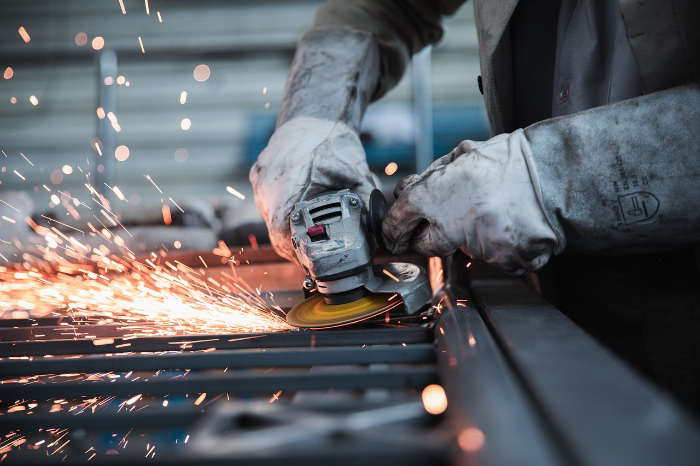Debt to GDP Ratio by Country 2025
Country | Debt to GDP Ratio 2024 (% of GDP)↓ | Central Government Debt 2024 (% of GDP) | General Government Debt 2024 (% of GDP) | |
|---|---|---|---|---|
| Sudan | 272% | 271.98% | ||
| Japan | 237% | 200.93% | 236.66% | |
| Singapore | 173% | 177% | ||
| Venezuela | 164% | 164.27% | ||
| Lebanon | 164% | 164.13% | ||
| Eritrea | 164% | |||
| Greece | 154% | 169.99% | 150.89% | |
| Italy | 135% | 132.5% | 135.33% | |
| Bahrain | 134% | 134.01% | ||
| United States | 124% | 102.69% | 120.79% | |
| France | 113% | 94.34% | 113.11% | |
| Canada | 111% | 52% | 110.77% | |
| Cape Verde | 109% | 113.74% | ||
| Bhutan | 108% | 107.78% | ||
| Belgium | 104% | 85.43% | 104.47% | |
| Spain | 102% | 93.57% | 101.82% | |
| Sri Lanka | 96.1% | 99.43% | ||
| Republic of the Congo | 95.4% | 95.44% | ||
| Bolivia | 95% | 100.86% | ||
| United Kingdom | 93.6% | 100.72% | 101.29% | |
| Portugal | 93.6% | 101.54% | 94.93% | |
| Jordan | 90.2% | 95.9% | ||
| Ukraine | 89.8% | 89.84% | ||
| China | 88.3% | 88.33% | ||
| Malawi | 87.7% | 74.38% | ||
| Suriname | 87.2% | 87.22% | ||
| Zimbabwe | 87% | 94.59% | ||
| Argentina | 83.2% | 85.33% | ||
| Egypt | 82.9% | 90.93% | ||
| Finland | 82.1% | 82.05% | 82.53% | |
| Mauritius | 82.1% | 91.36% | ||
| India | 81.92% | 53.82% | 81.29% | |
| Austria | 81.8% | 62.12% | 81.21% | |
| Bahamas | 81.5% | 77.79% | ||
| Guinea-Bissau | 80.3% | 82.29% | ||
| Pakistan | 80% | 70.07% | ||
| Tunisia | 79.8% | 83.13% | ||
| Fiji | 78.3% | 76.95% | ||
| South Africa | 76.9% | 76.36% | ||
| Mozambique | 76.9% | 96.63% | ||
| Brazil | 76.5% | 83.48% | 87.28% | |
| Costa Rica | 74.18% | 59.78% | 60.17% | |
| Hungary | 73.5% | 74.49% | 73.45% | |
| Gabon | 73.4% | 73.4% | ||
| Gambia | 72% | 73.49% | ||
| Yemen | 70.9% | 70.94% | 70.94% | |
| Ghana | 70.5% | 70.51% | ||
| Malaysia | 70.4% | 62.62% | 70.39% | |
| Uruguay | 70.3% | 58.33% | ||
| Morocco | 70% | 70.03% | ||
| Zambia | 69.6% | 11494% | ||
| Togo | 69% | 70.62% | ||
| Israel | 69% | 66.46% | 67.85% | |
| Laos | 68.71% | 96.45% | ||
| Jamaica | 67.9% | 69.92% | ||
| Rwanda | 67.2% | 67.24% | ||
| Slovenia | 67% | 61.59% | 67.04% | |
| Kenya | 65.5% | 65.59% | ||
| Namibia | 65.3% | 67.7% | ||
| Thailand | 63.7% | 56.57% | 57.17% | |
| Cyprus | 62.8% | 100.19% | 65.32% | |
| Maldives | 62.4% | 133.95% | ||
| Germany | 62.2% | 43.97% | 63.89% | |
| Myanmar | 61.3% | 61.3% | ||
| Colombia | 61.3% | 61.28% | ||
| El Salvador | 61.13% | 56.19% | 87.58% | |
| Seychelles | 61% | 57.8% | ||
| Philippines | 60.7% | 57.06% | ||
| Central African Republic | 60.7% | 60.67% | ||
| Lesotho | 60% | 59.75% | ||
| Slovakia | 59.7% | 64.04% | 58.02% | |
| Iceland | 59.3% | 59.94% | 59.08% | |
| Trinidad and Tobago | 58.36% | 64.48% | ||
| Angola | 58.2% | 62.5% | ||
| Croatia | 57.7% | 56.52% | 57.65% | |
| Panama | 56.6% | 56.62% | ||
| Poland | 55.1% | 45.04% | 55.28% | |
| Norway | 55.1% | 14.88% | 42.72% | |
| Liberia | 54.9% | 56.47% | ||
| Romania | 54.8% | 54.73% | 54.58% | |
| Albania | 54.7% | 59.23% | 55.65% | |
| North Macedonia | 53.8% | 60.67% | 54.83% | |
| Nigeria | 52.9% | 49.66% | 52.9% | |
| Burkina Faso | 52.7% | 52.69% | ||
| Uganda | 51.8% | 51.83% | ||
| Papua New Guinea | 51.1% | 53.7% | ||
| Ecuador | 50.6% | |||
| Armenia | 50.3% | 50.3% | ||
| Mexico | 49.7% | 45.45% | ||
| Tanzania | 48.2% | 48.21% | ||
| Serbia | 47.2% | 47.2% | 44.48% | |
| Niger | 47% | 47.17% | ||
| South Korea | 46.8% | 44.77% | 52.49% | |
| Latvia | 46.6% | 47.39% | 47.36% | |
| Algeria | 46.2% | 46.2% | ||
| Dominican Republic | 46.2% | 46.12% | ||
| Malta | 46.2% | 46.58% | 47.39% | |
| Paraguay | 45.2% | 38.17% | ||
| New Zealand | 45.2% | 51.15% | ||
| Australia | 43.8% | 36.79% | 49.83% | |
| Netherlands | 43.7% | 43.23% | ||
| Czechia | 43.3% | 43.81% | 42.99% | |
| Sierra Leone | 43% | 43% | ||
| Iraq | 42.9% | 42.91% | ||
| Cameroon | 42.7% | 39.54% | ||
| Nepal | 42.6% | 47.87% | ||
| Belize | 42.6% | 60.95% | ||
| Chile | 41.7% | 41.65% | 41.98% | |
| Qatar | 40.8% | 40.84% | ||
| Mauritania | 40.3% | 44.92% | ||
| Honduras | 39.8% | 47.87% | 41.14% | |
| Nicaragua | 39.1% | 39.12% | 39.12% | |
| Indonesia | 38.8% | 39.21% | 40.19% | |
| Madagascar | 38.8% | 50.41% | ||
| Ireland | 38.8% | 44.79% | 41.11% | |
| Lithuania | 38% | 37.65% | 38.22% | |
| Moldova | 37.8% | 37.57% | 38.13% | |
| Switzerland | 37.6% | 13.65% | 37.58% | |
| Iran | 36.8% | 36.85% | ||
| Equatorial Guinea | 36.2% | 36.2% | ||
| Georgia | 36.1% | 37.87% | ||
| Oman | 35.5% | 35.51% | ||
| Uzbekistan | 35% | 32.65% | ||
| Sweden | 34% | 34.43% | 32.64% | |
| Chad | 33.8% | 33.8% | ||
| Mongolia | 33% | 38.95% | 44.36% | |
| Vietnam | 32.9% | 32.86% | ||
| Peru | 32.8% | 30.92% | ||
| Bangladesh | 32.2% | 40.13% | ||
| United Arab Emirates | 32.1% | 32.11% | ||
| Ethiopia | 32% | 32.3% | ||
| Denmark | 31.1% | 20.24% | 27.99% | |
| Palestine | 30.7% | |||
| Tajikistan | 29.5% | 29.54% | ||
| Comoros | 28.4% | 30.82% | ||
| Guatemala | 27.9% | 28.24% | ||
| Cambodia | 26.6% | 26.62% | ||
| Luxembourg | 26.3% | 25.98% | ||
| Saudi Arabia | 26.2% | 29.87% | ||
| Kyrgyzstan | 25.9% | 36.64% | 36.64% | |
| Botswana | 24.9% | 32.79% | ||
| Turkey | 24.7% | 21.32% | 25.97% | |
| Guyana | 24.3% | 24.27% | ||
| Bulgaria | 24.1% | 23.55% | 24.08% | |
| Kazakhstan | 23.7% | 24.95% | 24.8% | |
| Estonia | 23.5% | 23.06% | 23.62% | |
| Azerbaijan | 20.9% | 20.85% | ||
| DR Congo | 19.3% | 19.31% | ||
| Eswatini | 19.3% | 37.21% | ||
| Bosnia and Herzegovina | 16.9% | 32.75% | 32.75% | |
| Russia | 16.4% | 20.3% | ||
| Haiti | 14% | 14.95% | ||
| Burundi | 13.1% | 43.18% | ||
| Hong Kong | 9.3% | |||
| Cayman Islands | 6.4% | |||
| Turkmenistan | 4.6% | 4.62% | 4.62% | |
| Kuwait | 3% | 3.04% | ||
| Brunei | 2.3% | 2.29% | ||
| Ivory Coast | 59.25% | |||
| Mali | 51.83% | |||
| Taiwan | 244.74% | 26.17% | ||
| Senegal | 113.67% | |||
| Guinea | 47.84% | |||
| South Sudan | 54.32% | |||
| Belarus | 44.38% | |||
| Vanuatu | 44.6% | |||
| Barbados | 104.38% | |||
| Sao Tome and Principe | 43.46% | |||
| Samoa | 27.71% | |||
| Saint Lucia | 74.77% | |||
| Kiribati | 9.92% | 9.92% | ||
| Grenada | 73.18% | |||
| Micronesia | 10.92% | |||
| Saint Vincent and the Grenadines | 91.61% | 92.69% | ||
| Antigua and Barbuda | 67.06% | |||
| Dominica | 104.35% | |||
| Saint Kitts and Nevis | 52.19% | |||
| Marshall Islands | 16.68% | |||
| San Marino | 65.19% | |||
| Nauru | 17.59% |
- Central government debt refers to debt incurred by a country’s federal/central government only. A surplus on the state or municipal level will have no impact on this indicator.
- General government debt refers to overall debt, including that of states and municipalities. A surplus in one area could offset a shortfall in another. For example, if the central government debt is high but state finances show a surplus, the general government debt could decrease.
- Both of these measures are given as a percentage of GDP.
- All % of GDP data were parsed on December of the corresponding year except for Sao Tome and Principe, whose 2023 value was taken form June 2023.
- All percentages have been rounded to the nearest hundredth of a percent.
Snapshot
-
Debt-to-GDP ratio, an economic metric comparing a country's government debt to its GDP, is pivotal for evaluating economic stability and repayment ability.
-
Japan, with the world's second-highest debt-to-GDP ratio, saw its debt surge due to government bailouts and stimulus initiatives following the stock market crash of 1992.
-
The United States, despite having the world's largest GDP, ranks 12th in debt-to-GDP ratio, driven by high military spending, tax cuts, and underfunded programs.
Debt-to-GDP ratio is an economic metric that compares a country’s government debt to its gross domestic product (GDP) (which represents the value of all goods and services produced by the country). Typically used to determine the stability and health of a nation’s economy, debt-to-GDP ratio is expressed as a percentage and offers an at-a-glance estimate of a country’s ability to pay back its current debts. It is typically evaluated alongside related metrics such as GDP per capita, GDP growth, GNP, and GNI per capita.
Nations with a low debt-to-GDP ratio are more likely to be able to repay their debts with relative ease. Nations whose economies struggle to produce income or which have an oversized debt tend to have a high debt-to-GDP ratio. Debt-to-GDP ratios above 77% can hinder economic growth and (in some cases) place a country at risk of defaulting on its debts, which could wreak havoc on its economy and financial markets.
Top 10 Countries with the Highest Debt-to-GDP Ratios (%)
Country | Debt to GDP Ratio (% of GDP) | Debt to GDP Ratio (% of GDP) | Debt to GDP Ratio (% of GDP) |
|---|---|---|---|
| India | 81.92% | 81.59% | |
| China | 88.3% | 83.4% | |
| United States | 124% | 122% | |
| Indonesia | 38.8% | 39.3% | |
| Pakistan | 80% | 91% | |
| Nigeria | 52.9% | 38.8% | |
| Brazil | 76.5% | 86.68% | |
| Bangladesh | 32.2% | 31.7% | |
| Russia | 16.4% | 14.9% | |
| Ethiopia | 32% | 38% |
As of December 2020, the nation with the highest debt-to-GDP ratio is Venezuela, and by a considerable margin. The South American country has what may be the world’s largest reserves of oil, but the state-owned oil company is said to be poorly managed, and Venezuela’s GDP has plummeted in recent years. At the same time, Venezuela has taken out massive loans, adding to its debt burden, and president Nicolas Maduro has made questionable moves to slow the country’s rampant inflation.
Japan occupies the second slot with a ratio of 266%. In 1992, Japan’s Nikkei (stock market) crashed. The government bailed out banks and insurance companies, providing them with low-interest credit. Banks were consolidated and nationalized, and other stimulus initiatives were used to help the struggling economy. However, these actions caused Japan’s debt to increase dramatically.
Another interesting entry on this list is the United States, whose debt-to-GDP ratio ranks 12th out of all the world’s countries. While the U.S. boasts the highest GDP in the world, it nonetheless spends more than it earns. Major contributors to the national debt include the world’s largest military budget, tax cuts (which reduce government income and rarely result in a corresponding increase in economic growth), COVID-19 relief efforts, and mandatory-but-underfunded programs such as Medicare.
Top 10 Countries with the Lowest Debt-to-GDP Ratios (%)
Country | Debt to GDP Ratio (% of GDP) | Debt to GDP Ratio (% of GDP) | Debt to GDP Ratio (% of GDP) |
|---|---|---|---|
| India | 81.92% | 81.59% | |
| China | 88.3% | 83.4% | |
| United States | 124% | 122% | |
| Indonesia | 38.8% | 39.3% | |
| Pakistan | 80% | 91% | |
| Nigeria | 52.9% | 38.8% | |
| Brazil | 76.5% | 86.68% | |
| Bangladesh | 32.2% | 31.7% | |
| Russia | 16.4% | 14.9% | |
| Ethiopia | 32% | 38% |
While a low debt-to-GDP ratio is generally desirable, it does not necessarily indicate a healthy economy. Many stagnant or developing economies have a low debt-to-income ratio because both their level of debt and their GDP are low. In fact, in some cases, a country’s economy could be healthier in the long run if the country were to borrow from another country and invest heavily in economic growth. This would increase the borrowing country’s debt-to-GDP ratio temporarily, but could also grow the economy (and GDP) enough to pay off the debt and continue earning increased profits in the future. However, because economic growth is not guaranteed, such borrowing could also backfire (as it arguably has for Venezuela).
Sources
- Central Government Debt - IMF
- General Government Debt - IMF
- Country List Government Debt to GDP - Trading Economics
- Factors Impacting the Federal Budget Deficit - The Balance
- Why US Deficit Spending Is Out of Control - The Balance
- Debt to GDP ratio - Wiki
- Venezuela Sinks Further into Oblivion - Forbes
- The Strange Case of Venezuela's National Debt - Venezuelanalysis

























